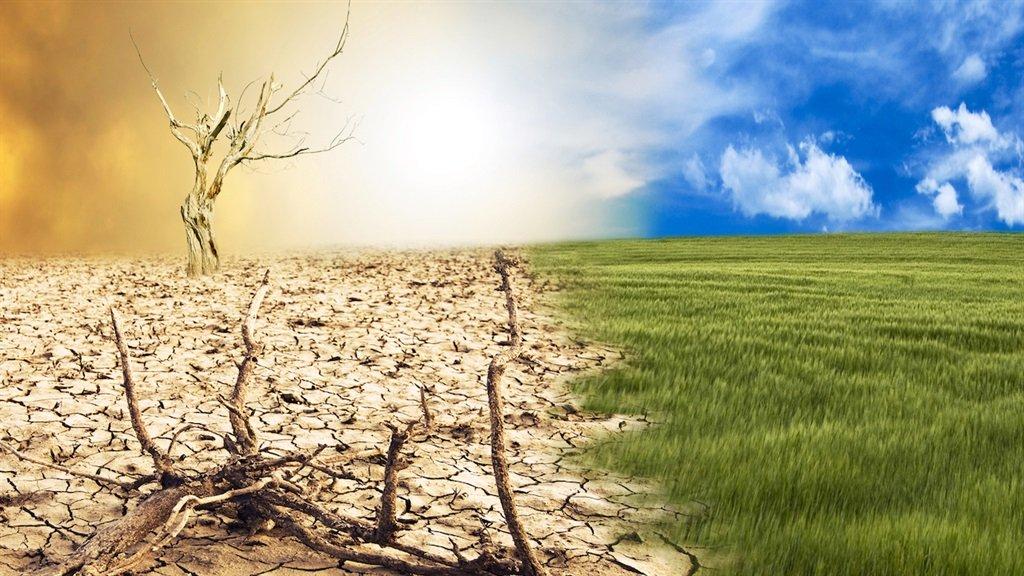Africa-Press – South-Africa. If we know that wetter or drier conditions are coming, we can better plan for it to improve our water, energy, and food security, as well as infrastructure disruptions, writes Shafick Adams.
According to a recent Nature Climate Change article, climate change literacy in Africa ranges from 23 to 66% of the population across 33 countries. This is low for an area that is exposed to climate change risks and lived experiences.
As we exit winter, I always check online for the current and projected ENSO phase; ENSO is short for El Niño-Southern Oscillation. ENSO is the recurring climate pattern that involves the changes in the temperature of waters in the central and eastern tropical Pacific Ocean and has three phases – El Niño, La Niña and ENSO-neutral.
There is an established relationship between the ENSO phases and the teleconnection with weather and climate variability for most years.
Horn of Africa faces brutal drought and food crisis
Simplistically, the El Niño phase is associated with drier conditions while La Niña is associated with wetter conditions in the austral summer (October to March). ENSO-neutral is associated with temperatures, winds, rising air, and rainfall across the tropical Pacific that are close to their long-term averages. We know that the El Niño and La Niña phases typically last between nine to 12 months and two years.
The graph shows the three-year history of sea surface temperatures in the Niño-3.4 region of the tropical Pacific for the eight existing double-dip La Niña events (gray lines) and the current event (purple line). Of all the previous seven events, two went on to La Niña in their third year (below the blue dashed line), two went on to be at or near El Niño levels (above the red dashed line) and three were neutral. The graph is based on monthly Niño-3.4 index data from CPC using ERSSTv5 and was created by Michelle L’Heureux.
It is also a good predictor of local scale disruptions (flooding, electrical and ICT disruptions) or droughts. Food and energy insecurity usually occurs as a lag impact, as the rain deficit causes hydrological and agricultural droughts over time and space. According to the National Integrated Water Information System, of the 221 dams, 92 dams are at 100% and above full storage capacity (FSC), 28 dams at less than 50% FSC and 16 dams at less than 20% FSC. Full dams do not imply water security to communities, but they do act as storage systems to capture runoff.
A matter of probability
A La Niña Advisory was issued for August – an advisory is issued when it is observed and expected to continue according to the NOAA Climate Prediction Center and the South African Weather Services Advisory. The impact of the ENSO phases on the climate and weather is a matter of probability and not absolute certainty.
What this means is that we might have a wetter summer over parts of southern Africa. Wetter conditions may not be experienced over the area in a blanket manner, as we must consider other localised variables. Currently, our major supply dams’ levels range from low (dominated by the Eastern Cape) to moderate and high. Several dams will in most likelihood fill up and spill excess water when we go into the La Niña phase.
If we know that wetter or drier conditions are coming, we can better plan for it to improve our water, energy, and food security, as well as infrastructure disruptions. This is part of adapting to climate change in conjunction with climate change mitigation. The adaptation through planning and implementation must happen across all scales and levels of government, and being water smart at the household and industry level.
How climate change will hit SA’s crop yields
A 2019 Afrobarometer survey (2016-18) found that 17% of South Africans are climate literate (have heard of climate change and associate it with negative changes in weather patterns and that human activity is a major cause), 24% were climate change aware (have heard of it but not its negative impacts and major cause), and 59% have not heard of climate change. Awareness of potential impacts must be factored before we enter the drier or wetter periods and not the preferred reactionary approaches. Plans that were developed during droughts and shelved when the dams are full must continue to be implemented.
Measures can be put in place
In many areas where excess runoff is not captured and stored in dams, it will run over the landscapes towards the lowest points, evaporate, and infiltrate, percolate and recharge aquifers under natural conditions. This water is essential to maintain ecosystems and drive the hydrological cycle. A fair percentage of water can be lost to the sea or atmosphere. Measures can be put in place to transfer this water to aquifers using a variety of intervention techniques like managed aquifer recharge. This alone can significantly enhance resilience when the El Niño phase returns.
Excess runoff also brings more sediment to our impoundments because of natural processes and poor land use practices. Siltation of dams robs us of precious storage as the sediment takes up space in the dam. Natural and engineered buffers can prevent excessive silting of our open impoundments. In the urban landscape, stormwater infrastructure maintenance should be prioritised to prevent blockages and minimise urban flooding experienced during heavy downpours.
Traffic, electricity, ICT, and other infrastructure that are prone to high rainfall disruptions can be better protected through improved isolation and barriers. In the agricultural sector, drought-tolerant crops could improve food security during periods associated with El Niño. Poor land use planning remains an area of concern as exposed by the recent high precipitation events in KwaZulu-Natal.
Rainwater ‘everywhere on the planet’ unsafe to drink due to chemicals – study
Getting into this mode ensures preparedness. Decision-makers can use the simple ENSO phase graph to provide the required macro-planning oversight within their institutions for the coming season(s). Expected budget use can be prioritised according to what the most likely scenario will be for the coming seasons. Floods are quick and catastrophic and require immediate interventions, while droughts are of a slower onset and interventions are more continuous.
Detailed spatial and temporal advisories can inform more localised and contextual decision-making. Often the push-back comes because of issues with model and prediction uncertainty–even if it is low. Uncertainty is and should be part of the decision-making process and not used as an excuse for indecisiveness. Embracing uncertainty is part of managing a complex world. Because even if it is wrong, it would mean that we have initiatives in place that can only make us more resilient to current and future shocks. There needs to be a paradigm where these shocks are what we manage through – it then becomes a bump in the path that is navigated with the best decisions and foresight. Good management should be the norm and not crisis management. That is how we become resilient.
– Dr Shafick Adams is an Executive Manager at the Water Research Commission
For More News And Analysis About South-Africa Follow Africa-Press






